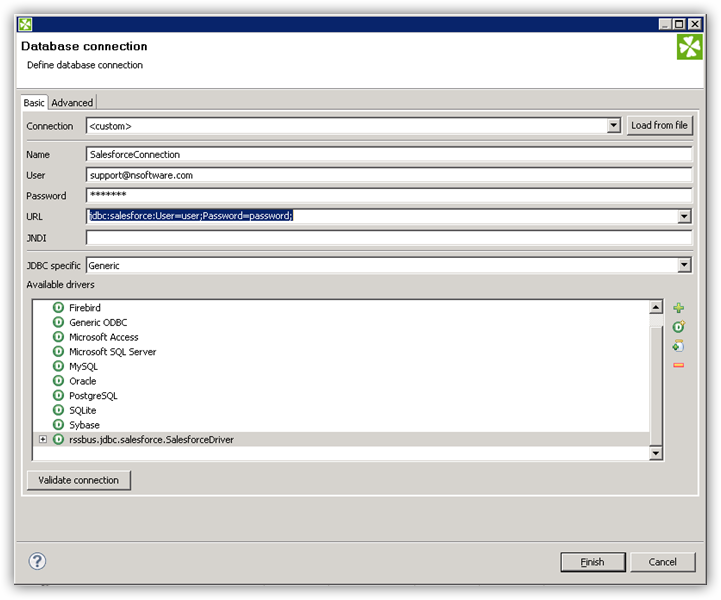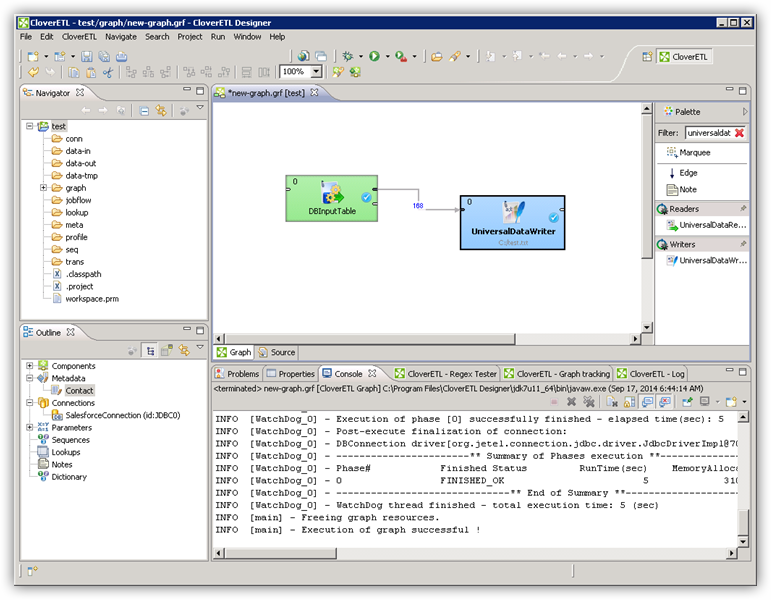Discover how a bimodal integration strategy can address the major data management challenges facing your organization today.
Get the Report →Connect to Kintone Data in CloverDX (formerly CloverETL)
Transfer Kintone data using the visual workflow in the CloverDX data integration tool.
The CData JDBC Driver for Kintone enables you to use the data transformation components in CloverDX (formerly CloverETL) to work with Kintone as sources and destinations. In this article, you will use the JDBC Driver for Kintone to set up a simple transfer into a flat file. The CData JDBC Driver for Kintone enables you to use the data transformation components in CloverDX (formerly CloverETL) to work with Kintone as sources and destinations. In this article, you will use the JDBC Driver for Kintone to set up a simple transfer into a flat file.
Connect to Kintone as a JDBC Data Source
- Create the connection to Kintone data. In a new CloverDX graph, right-click the Connections node in the Outline pane and click Connections -> Create Connection. The Database Connection wizard is displayed.
- Click the plus icon to load a driver from a JAR. Browse to the lib subfolder of the installation directory and select the cdata.jdbc.kintone.jar file.
- Enter the JDBC URL.
In addition to the authentication values, set the following parameters to connect to and retrieve data from Kintone:
- Url: The URL of your account.
- GuestSpaceId: Optional. Set this when using a guest space.
Authenticating with Kintone
Kintone supports the following authentication methods.
Using Password Authentication
You must set the following to authenticate:
- User: The username of your account.
- Password: The password of your account.
Using Basic Authentication
If the basic authentication security feature is set on the domain, supply the additional login credentials with BasicAuthUser and BasicAuthPassword. Basic authentication requires these credentials in addition to User and Password.
Using Client SSL
Instead of basic authentication, you can specify a client certificate to authenticate. Set SSLClientCert, SSLClientCertType, SSLClientCertSubject, and SSLClientCertPassword. Additionally, set User and Password to your login credentials.
Built-in Connection String Designer
For assistance in constructing the JDBC URL, use the connection string designer built into the Kintone JDBC Driver. Either double-click the JAR file or execute the jar file from the command-line.
java -jar cdata.jdbc.kintone.jarFill in the connection properties and copy the connection string to the clipboard.
![Using the built-in connection string designer to generate a JDBC URL (Salesforce is shown.)]()
A typical JDBC URL is below:
jdbc:kintone:User=myuseraccount;Password=mypassword;Url=http://subdomain.domain.com;GuestSpaceId=myspaceid

Query Kintone Data with the DBInputTable Component
- Drag a DBInputTable from the Readers selection of the Palette onto the job flow and double-click it to open the configuration editor.
- In the DB connection property, select the Kintone JDBC data source from the drop-down menu.
- Enter the SQL query. For example:
SELECT CreatorName, Text FROM Comments WHERE AppId = '1354841'
Write the Output of the Query to a UniversalDataWriter
- Drag a UniversalDataWriter from the Writers selection onto the jobflow.
- Double-click the UniversalDataWriter to open the configuration editor and add a file URL.
- Right-click the DBInputTable and then click Extract Metadata.
- Connect the output port of the DBInputTable to the UniversalDataWriter.
- In the resulting Select Metadata menu for the UniversalDataWriter, choose the Comments table. (You can also open this menu by right-clicking the input port for the UniversalDataWriter.)
- Click Run to write to the file.








